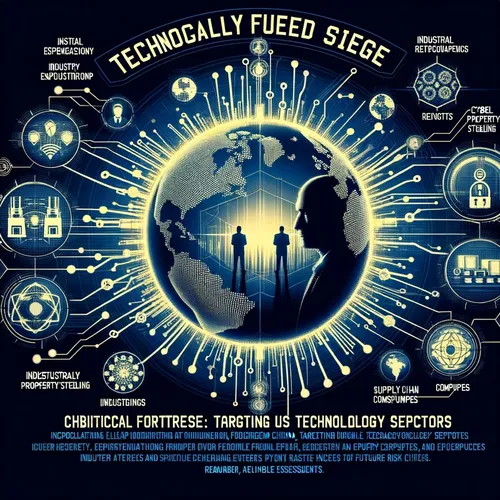Silicon Siege: China's Cyber Typhoons Wreaking Havoc on US Tech
- Author
- Quiet. Please
- Published
- Fri 05 Sep 2025
- Episode Link
- https://www.spreaker.com/episode/silicon-siege-china-s-cyber-typhoons-wreaking-havoc-on-us-tech--67647351
This is your Silicon Siege: China's Tech Offensive podcast.
Hey listeners, Ting here, and if you didn’t update your firewalls this week, buckle up—because the last two weeks in US cyber defense have been a Silicon Siege for the ages. Let's dive right into the digital trenches.
First, let’s talk Salt Typhoon, a name that sounds more like a bad weather day at your favorite noodle shop but in reality, it’s the latest, largest Chinese cyberespionage campaign yet. According to The New York Times and confirmed by the NSA, Salt Typhoon, linked to China’s Ministry of State Security, has been siphoning data from not just ordinary Americans, but all the way up to President Donald Trump and VP JD Vance. Investigators say the campaign breached global telecom giants, with near-complete access to the data arteries of US communications networks. That means industrial espionage on an Olympic scale—think blueprints, patents, sensitive business emails—gone faster than free WiFi at Defcon. Salt Typhoon’s toolkit? We’re talking everything from Windows rootkits like Demodex to good ol’ email phishing, with a dash of PowerShell sorcery for flavor.
Now, if you thought Salt Typhoon was an appetizer, Volt Typhoon was the main course, and unfortunately, the house special was disruption. According to CISA director Jen Easterly and confirmed in new Tenable research, Volt Typhoon zeroed in on operational technology in places like Guam, sneaking into the power grid, ports, and even water utilities. The stated goal? If tensions over Taiwan ever escalate, these guys want a kill-switch ready to flip, potentially leaving part of the US military flat-footed and hoping Alexa works for battlefield logistics.
Digging deeper, industry experts at Trustwave and ESET warn that supply chains are now chessboards for Beijing’s APT teams like Operator Panda, RedMike, and Ghost Emperor. They’re targeting backbone routers in telecommunication networks—your data doesn’t even need to hit a server before it’s quietly cloned and whisked away to a secret MSS (Ministry of State Security) bunker somewhere in Sichuan. Compromised vendors and firmware mean that US tech firms can no longer afford to only patch software—they’ve got to quarantine questionable hardware, too.
Let’s not forget the Pentagon’s own goal: a congressional House report released today flagged $2.5 billion in US-funded research with Chinese military-affiliated universities. That research includes hypersonics, AI, and nuclear material—big oops if you want to stay ahead in the next arms race.
Expert consensus, like that from NSA analysts and CISA, is that Beijing is perfecting a dual-threat: steal everything not nailed down, and prep cyber-sabotage if and when tensions spike. As cybersecurity veteran Terry Dunlap put it, China is playing the long game—a 100-Year Strategy. The biggest risk assessment for the next quarter? All your networks aren’t yours anymore unless you go zero-trust, audit-as-you-go, and maybe hire a few more Tings.
Thanks for tuning in, and remember, subscribe for the latest cyber drama you won’t get on cable news. This has been a quiet please production, for more check out quiet please dot ai.
For more http://www.quietplease.ai
Get the best deals https://amzn.to/3ODvOta
